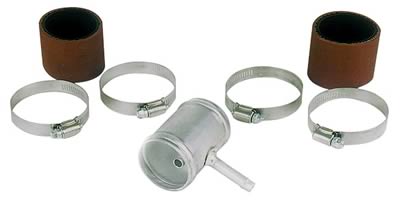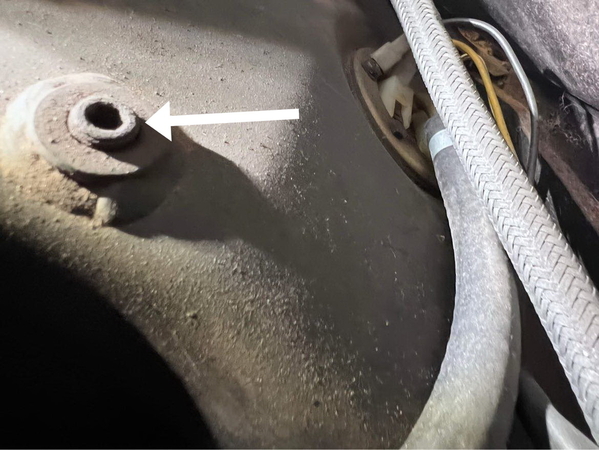Thx alot for many super good suggestions - I really appreciate the help. :-)
I like the idea of using the drain-plug, but are scared if it will go wron trying to remove the drain-plug. I'm really all for keeping the old parts alive as long as possible. My carb has been changed many years ago before I bought the car and also the engine has had modifications, but the rest of the car is actually very stock. So won't like to break the gas tank.
As joules wrote, I can see my carb get's the fuel feed from the fuel sender pipe. See photo below.

And there's another hose going from the tank, which goes to the "Canister Assembly Fuel Vapor Storage" (blue can in the engine room in passagerside), see photo below.

I assume this hose to the "Fuel Vapor" I better keep, for the tank to breathe?, otherwise that could have been used as return line.
I got some inspiration from some youtube video and found Moroso kit 65385:
I was thinking, perhaps that was a easy way to install this in the Gas Filler Neck Hose, mine already looks like it's in for a replacement, see photo below.

But I'm not sure if it will fit in there, in the Gas Filler Neck, the billet aluminum adapter, what do you guys think?
Also I read somewhere, that it's "bad" to not have the return line done with a hose down into the tank, so the fuel gets dumped in the fuel in the tank and not dripping down creating bubbles on top of the fuel. Is this a valid concern? If yes, it would ruin the idea of added the return line to the Fuel Filler Neck, eg via the Moroso kit. :-/
Once again REALLY appreciate all the inputs, You guys are just super hero's. :-)
BR
Bryske











